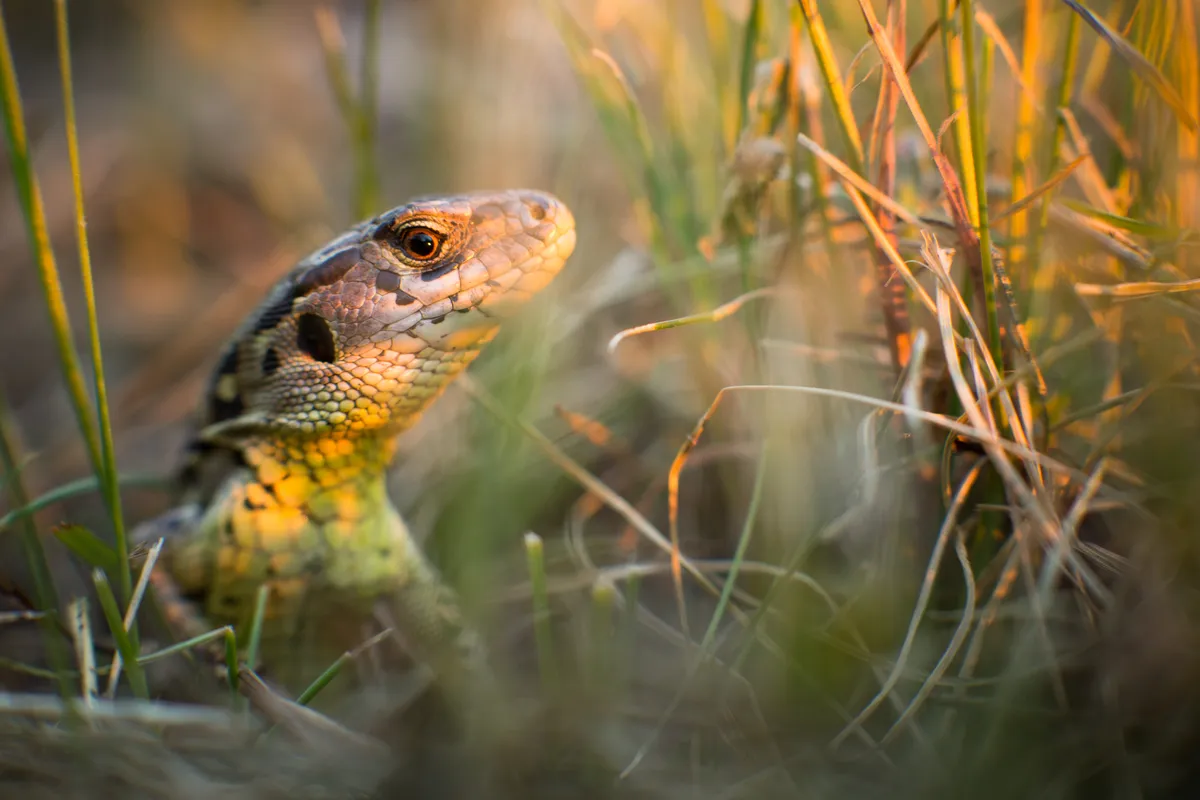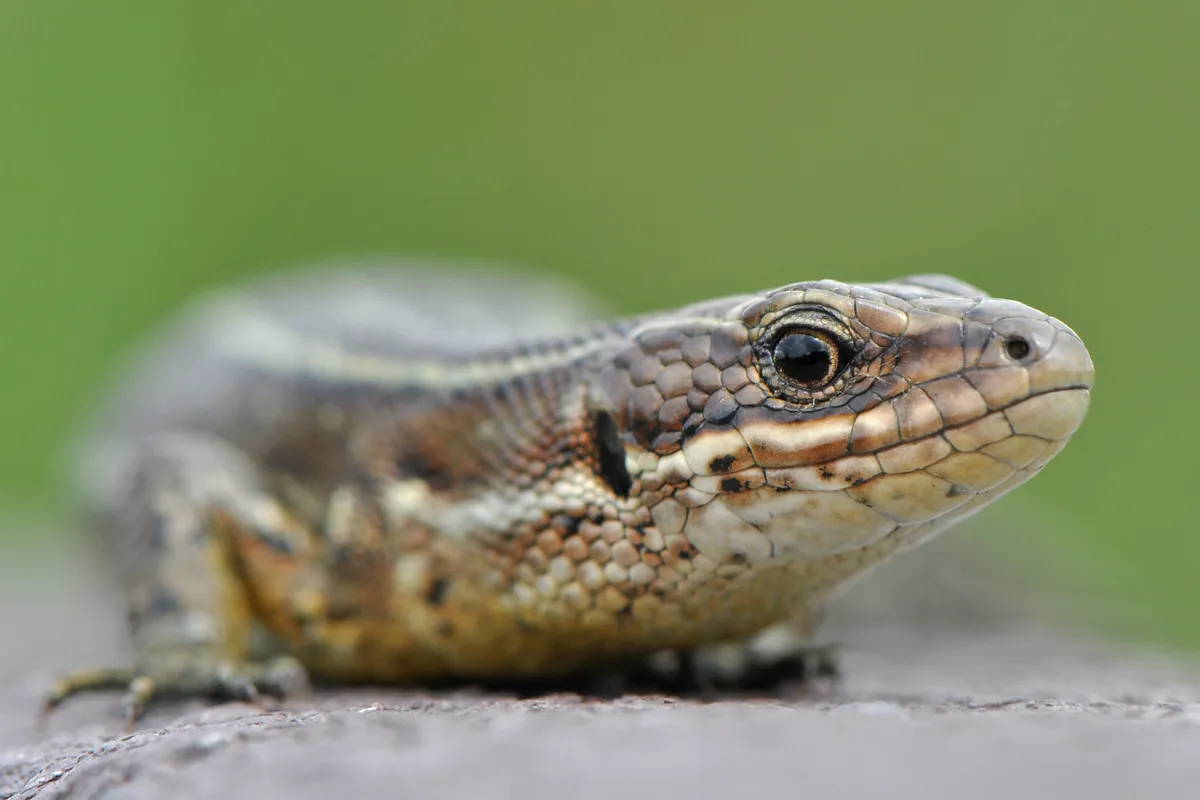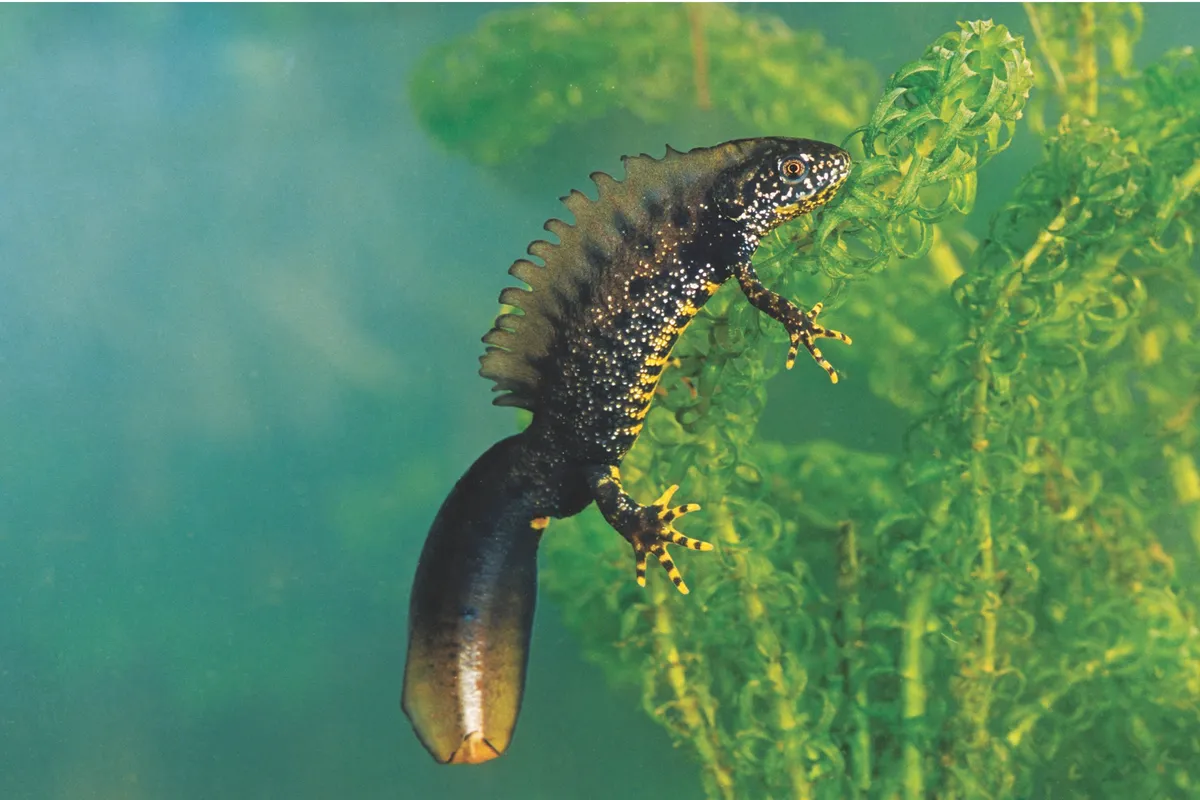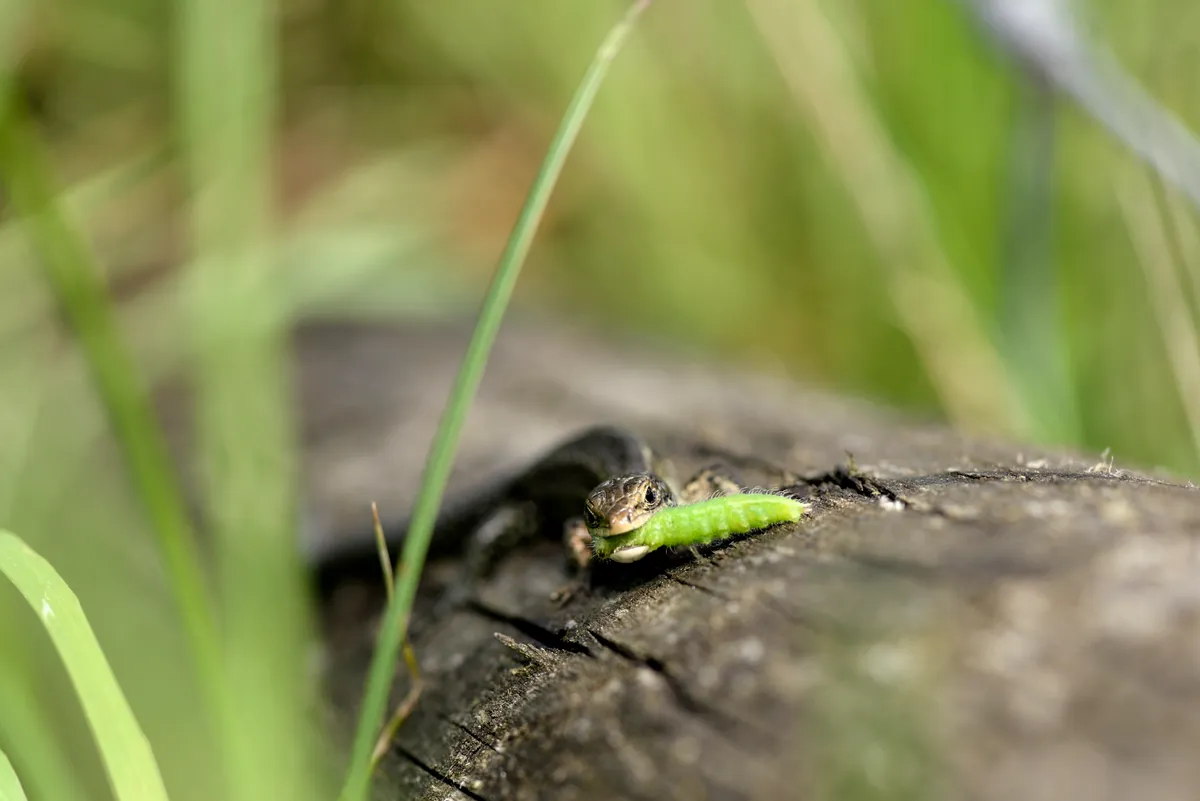Common lizards are lovers of the sun and can often be seen basking in small groups – particularly in late summer when the dark-coloured juveniles are born. Log piles can be excellent places to see the young lizards basking.
Highly reliant upon their camouflage to evade detection, common lizards remain perfectly still and only move as a last resort. The scuttle of legs and brief glimpse of a tail disappearing into cover is often all we might witness. But tread carefully and look for sun-kissed spots on banks or rocky outcrops and you may spy a lizard or two.
In this guide, we take a closer look at common lizards in the UK, revealing information on how to identify them, where they live and what they eat.
Interested in learning more about British wildlife? Check out our guides to snakes, frogs and toads, and deer.
Reptiles of the British Isles
Discover the fascinating world of snakes, lizards and slow worms with BBC Countryfile Magazine's guide to Britain's six native reptiles.

What is a common lizard?
The common lizard – Zootoca vivipara – is a small reptile, with an adult measuring around 15cm from nose to the tip of the tail. The tail itself can detach, a process known as autotomy, as a distraction from predators, with a new appendage growing in its place.
They are variable in colour, but commonly a mottle of browns with faint patterns of spots and stripes. Some individuals are olive-green while melanism, a blackening of the skin pigment, is less common.
The common lizard is also known as the viviparous lizard, as it gives birth to live young rather than lay eggs. The embryos develop inside eggs, the shells of which ‘break’ as the female lizard gives birth.

Common lizard habitat
The common lizard is more common in coastal areas where it favours scrubland or areas of well-drained soil. Log piles can be excellent places to see the young lizards basking.
Common lizard distribution
The common lizard is widespread across the British Isles, and is the only land reptile native to Ireland, although it is absent from much of the Hebrides, Shetland and Orkney.
Do you know your amphibians?
What is an amphibian? Where do they live? And what species can be found in Britain?

Common lizard diet
Common lizards feed on a variety of invertebrates, such as grasshoppers and spiders.
They themselves have plenty of predators and are often preyed by adders and smooth snakes, along with mammals such as hedgehogs and raptors like the kestrel.


